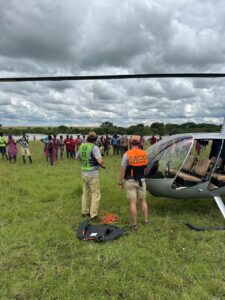We’ve had a really dry January and February in the Mara, which created some complicated human-elephant conflict situations with water and grass being such a scarce resource. Luckily in March the rains came with nearly daily thunderstorms. Some have not been as lucky in the north where civil unrest continues in the Laikipia area due to drought.
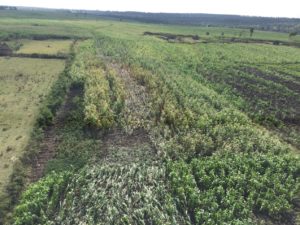
Mara Elephant Project is continuing to battle crop raiding elephants in both the Kirindon and Pardamat area but we’ve managed to mitigate the conflict situations successfully with our Karen Blixen Camp Ree Park Safari helicopter. We pushed elephants to safety 12 times in the month of January alone.
Transmara crop damage from a group of elephants.
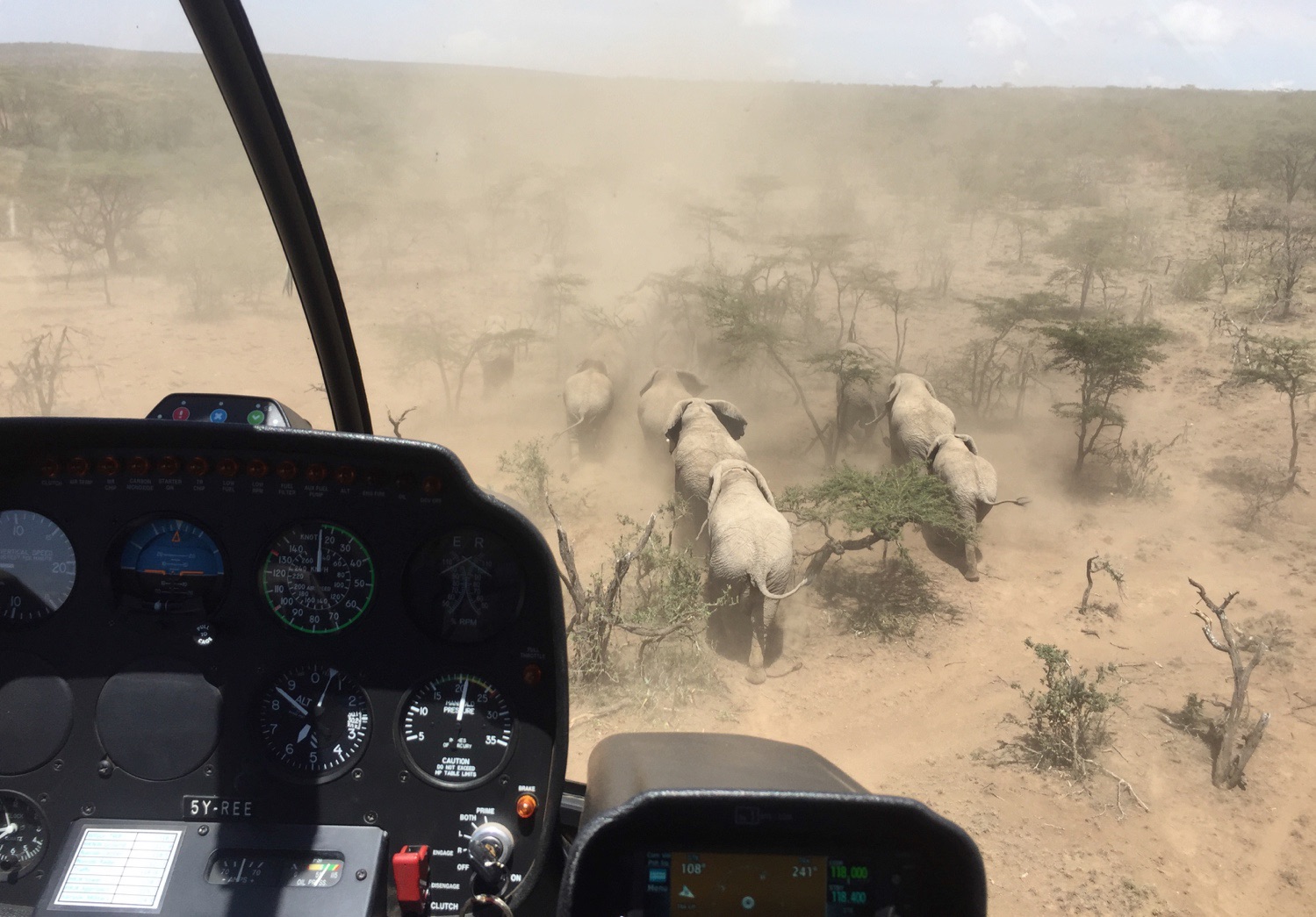
MEP CEO piloting the helicopter to push elephants out of a farm. Notice the dry conditions.
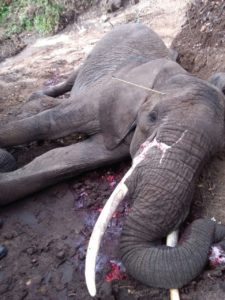
We had an increase in elephant deaths in the first quarter. A baby elephant was found alone in the Olkinyei Conservancy by MEP rangers out on patrol. Unfortunately, the following day it was found deceased by natural causes. We are seeing this because of the lack of rain in the Mara. Many mothers are unable to care for their young. There were five elephant deaths as a result from poaching, one from human-elephant conflict and two that are undetermined.
One of the five dead elephants reported in the last three months.
Poaching has been on the rise in the Loita Hills, a forested area in the eastern portion of the ecosystem, where grass has been scarce and herders from Tanzania have moved into elephant rangeland searching for grass. In response to the conflict, MEP sent a rapid response team for 10 days to investigate the increase in poaching. We plan to have a continued presence in this area for the foreseeable future. More on the success of this team can be found in the ranger report.
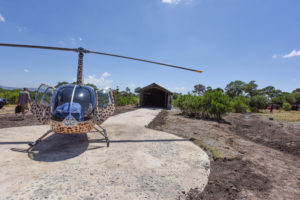 The helicopter hanger has been completed which will be a vital tool for keeping our helicopter in peak condition. Keeping the helicopter out of the elements is extremely important for its lifespan. Additionally, the hanger can be locked, which greatly reduces the risk of non-qualified people interacting with its fragile exterior and keeping wildlife small or large from causing major damage.
The helicopter hanger has been completed which will be a vital tool for keeping our helicopter in peak condition. Keeping the helicopter out of the elements is extremely important for its lifespan. Additionally, the hanger can be locked, which greatly reduces the risk of non-qualified people interacting with its fragile exterior and keeping wildlife small or large from causing major damage.
The recently competed helicopter landing pad.
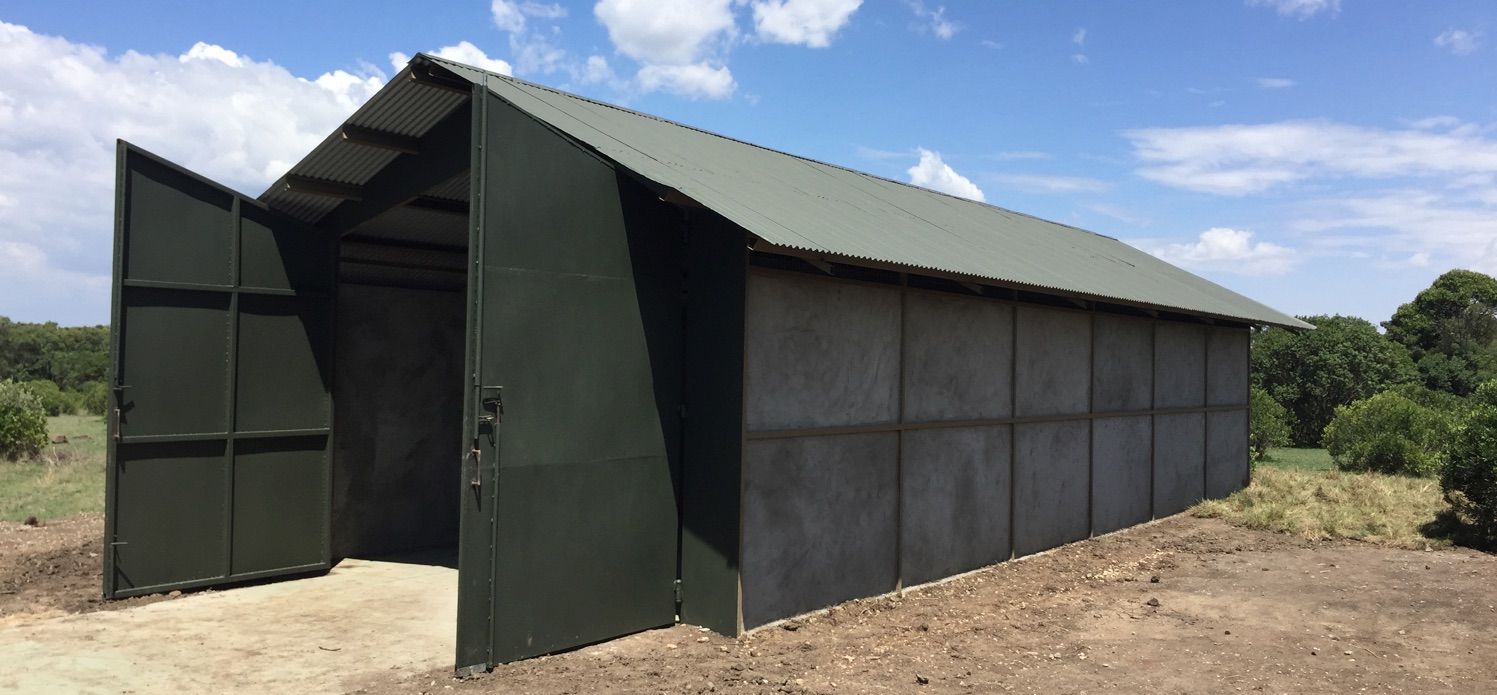
The newly completed helicopter hangar.
MEP collared a new female elephant in February, Ndorre, as a result of the increase conflict in Loita Hills. Ndorre roams in a herd of around 50 elephants that spend their time in a thick bush area north of Lake Natron. We are hoping to gather movement data from her so we can respond rapidly to the increasing situation there.

The aerial monitoring of all 22 of our elephants monthly in partnership with World Wildlife Fund using the Save The Elephants (STE) form has been a great resource for MEP. Traditionally, MEP tracked the collared elephants on the ground and remotely primarily as an anti-poaching and HEC tool. In addition to this, we are now seeking to understand more about the herd dynamics. Partner STE developed an aerial tracking protocol, which MEP uses during all tracking flights. This monthly aerial monitoring exercise gives MEP important insight into the number of elephants the collars are representing, the herd structures and proximity to water, settlements and livestock. MEP also checks to see if any elephants have been wounded. Currently, the collared elephants represent between 500 and 600 individuals. We are happy to report that Courtney has fully recovered from her previous injuries and is doing well. We also have a new baby courtesy of collared elephant Chelsea.
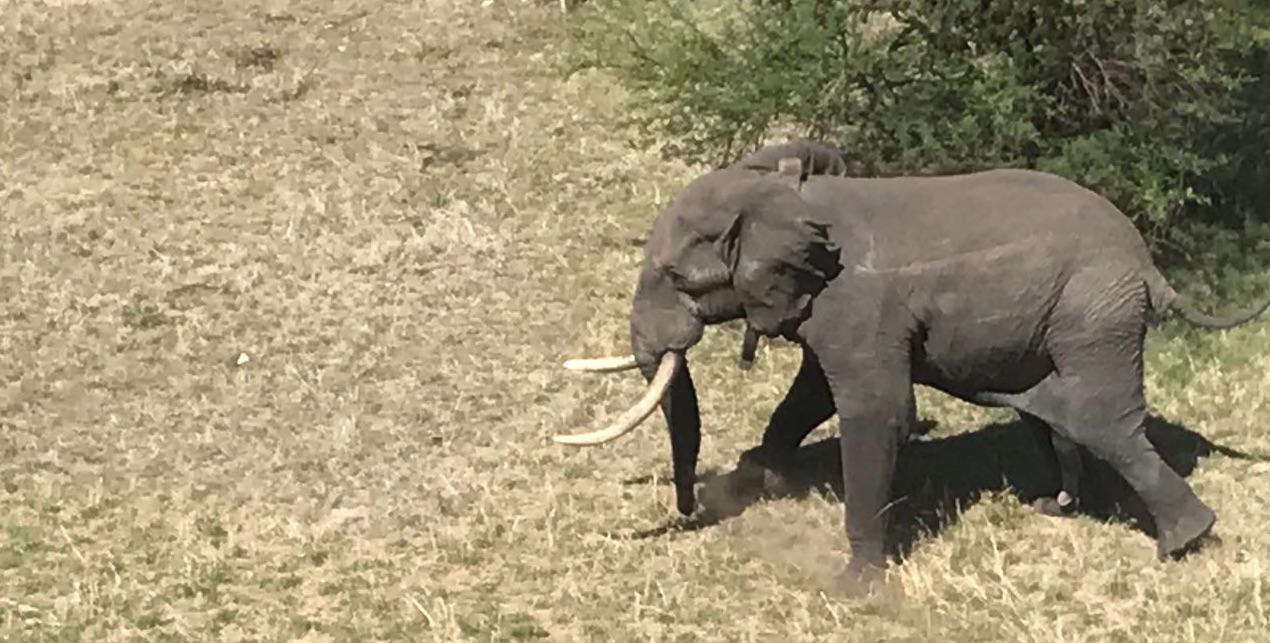
Spotting MEP collared elephant, Mytene, in March on an aerial monitoring flight.
These aerial monitoring flights have led to new partnerships as well with some of our collared elephants moving into Tanzania. I’m very optimistic about our new partnership with Tanzania National Parks Authority (TANAPA). Warden Joseph France in the Serengeti has been keeping a close eye on our collared elephants that have crossed over into Tanzania looking for more water and lush rangelands.
MEP is also very excited about our latest rapid response tool courtesy of The David Sheldrick Wildlife Trust. They donated a new Land Rover to MEP operations. We received this vehicle and are now using it to expand our patrol area. This vehicle will be essential to our rapid response team in Loita Hills.
Some other general first quarter highlights are that MEP was happy to give our staff a 10% raise starting in January for their excellent work. We also have completed the 2016 Annual Report and are very happy to announce some great successes in the last year. MEP’s next board meeting is in May and our first Nairobi fundraising event was on April 27 bringing together many important stakeholders that we’ll discuss more about in the future.
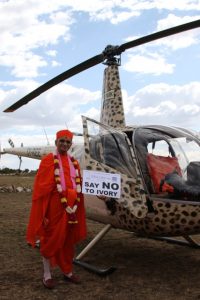
On January 7, MEP had a very special visitor from the Mara River Camp, His Divine Holiness Acharya Swamishree Purushottampriyadasji Maharaj, the spiritual leader of Shree Swaminarayan Gadi Sansthan, a worldwide center for spiritual, cultural and social welfare visited the sects headquarters in Kenya. His Divine Holiness was really impressed with MEP’s conservation work in the Mara and donated $1,000 to the cause as well as blessed the helicopter. Please check in with our fundraising report to see about the other important donations we received in the first quarter of 2017.
His Holiness in front of the helicopter.
Thanks to all of our partners and individual donors for the continued support!
